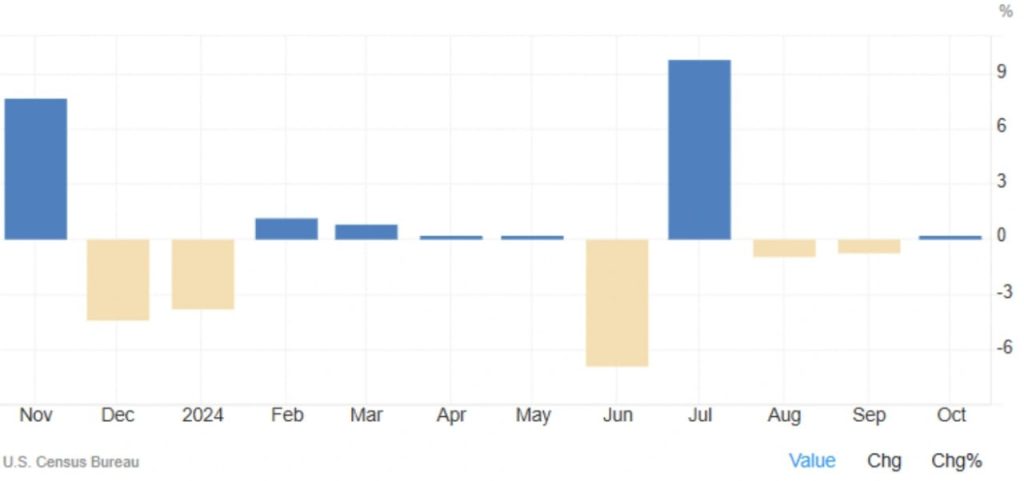
US Durable Goods Orders See Modest Growth in October
In October 2024, new orders for durable goods in the United States rose by a modest 0.2%, reaching $286.56 billion. This increase marks a recovery from the revised 0.4% decline recorded in September. However, the growth fell short of market expectations, which had predicted a stronger rebound of 0.5%. This data reflects the cautious pace of recovery in the manufacturing sector amidst broader economic challenges.

A Closer Look at Durable Goods Data
Durable goods orders are a critical economic indicator, encompassing items like machinery, vehicles, and appliances designed to last several years. These goods are often seen as a measure of business investment and consumer confidence. The October increase, though positive, signals that manufacturers are navigating a complex environment. September’s decline, now revised from an initially reported drop, had disrupted a streak of growth seen earlier in the year.
This fluctuation in orders comes at a time when companies are grappling with persistent headwinds. Higher production costs due to inflation, lingering supply chain bottlenecks, and rising interest rates are creating a less predictable environment for manufacturers. Analysts note that these factors could explain why October’s growth did not meet expectations.
Challenges and Implications for Manufacturing
The manufacturing sector’s modest gains reflect a mixed economic landscape. While the increase in durable goods orders shows resilience, it also highlights ongoing struggles. Inflation has raised the cost of raw materials, while supply chain delays continue to impact delivery schedules and inventory levels. Moreover, higher interest rates make financing for equipment and other capital investments more expensive, potentially discouraging businesses from placing larger orders.
This subdued growth in durable goods may also suggest cautious behavior among consumers and businesses alike. With economic uncertainty still prevalent, companies might be opting to delay significant investments until the outlook becomes clearer. This hesitation could have a ripple effect on production levels, employment, and overall economic momentum.
Looking Ahead: Will Growth Stabilize?
The path forward for durable goods orders remains uncertain. Economists and industry stakeholders will closely monitor upcoming reports to assess whether October’s modest growth signals a stabilization or if further fluctuations lie ahead. Key sectors like transportation equipment and machinery, which often drive these figures, will be pivotal in determining the overall trend.
Additionally, external factors such as global economic conditions and domestic policy changes could influence future performance. A sustained recovery in durable goods orders would likely require easing inflationary pressures, improved supply chain efficiency, and a more favorable interest rate environment. Until then, the manufacturing sector is expected to proceed cautiously, balancing short-term challenges with long-term opportunities.
As businesses and policymakers analyze these trends, durable goods data will continue to serve as a vital barometer of the US economy’s health. The October numbers, while not as robust as anticipated, underscore the resilience of the manufacturing sector in the face of ongoing economic complexities.
Share
Hot topics

Federal Reserve’s Challenges to Trump’s New Policies
As the Federal Reserve Open Market Committee (FOMC) prepares for its upcoming meeting, all eyes are on how the Fed will respond to Donald Trump’s latest economic policies. With the...
Read more




Submit comment
Your email address will not be published. Required fields are marked *